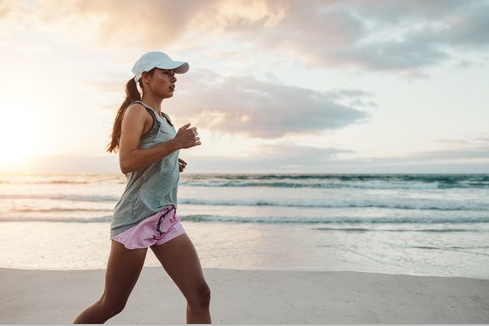Many factors can contribute to the formation of varicose veins. One surprising factor is a person’s height. Being tall is tied to higher odds of varicose veins, believe it or not. Learn more about this and what you can do to improve your vascular health from The Vein Centre.
More than 30 million people in the United States have varicose veins, according to Stanford Medicine research. While varicose are often written off as a nuisance or simple cosmetic issue, engorged blood vessels can cause much more severe health concerns and discomforts. These veins are usually visible just below the surface of the skin and will appear swollen and twisted.
Advanced varicose veins can cause pain, blood clots, deep vein thrombosis, ulcers, bleeding, and skin color changes.
Symptoms of Vein Disease
- Vein pain: Varicose vein pain can feel achy or make your legs feel heavy. It often gets worse after sitting or standing for long periods.
- Blood clots: Superficial blood clots cause swelling, redness, and pain in the area around the affected vein. These blood clots are unlikely to travel to the lungs and cause serious conditions.
- Deep vein thrombosis: DVT formation from varicose veins creates blood clots deep in the body. If the clot breaks loose, it can cause a severe health issue in the lung called a pulmonary embolism.
- Ulcers: Venous ulcers are a leg wound that forms when blood doesn’t circulate properly. Blood can back up in veins putting pressure on the skin. This pressure can create an open sore.
- Bleeding: As varicose veins are close to the surface of the skin, a bump or cut can cause bleeding. This kind of bleeding can be difficult to stop and may require medical intervention.
- Skin color changes: Skin can become discolored when blood pools under the skin from untreated varicose veins. The skin can appear reddish or reddish-brown and become scar-like.
Risk Factors for Vein Disease
Varicose veins are widely known to be caused by age, gender, pregnancy, and obesity, but new studies have revealed other risk factors that contribute to developing varicose veins. These risk factors are connected to genetics and stature.
- Height: The study shows an increased risk of varicose veins with increased height.
- Genetics: The genes that determine height can influence varicose vein formation. There is also an increased correlation between DVT (deep vein thrombosis) and varicose veins.
These two factors increase varicose vein formation risks in people over 50, especially women. While this information is still new, it can help health care providers identify at-risk individuals. Those who have a higher statistical chance of developing vascular health issues can take additional preventative measures to take care of their circulatory system.
As of yet, the exact reason people over average height experience increased vein health risks is unknown. This correlation is a new finding that has never been identified as a risk factor before the study. Some wonder if gravity and the vertical distance blood has to flow in a taller person has an effect on varicose veins, but so far this is not proven in the studies.
Preventing Varicose Veins
While you can’t change your height, there are preventative measures to help reduce the stress on veins and the formation of varicose veins and spider veins. Vein care can play a large role in the extent that varicose veins form.
Exercise
By getting regular exercise, you strengthen your circulatory system as a whole. Lowering your blood pressure will help keep your vein walls from getting stressed and becoming damaged and weak. Pumping your muscles can also aid blood flow, which is why daily exercise is recommended.

Maintain Healthy Weight
Obesity and extra weight can put added pressure and stress on your veins. Blood can pool in the legs where there are insufficient valves, which will start to damage the veins further. Added weight can also hide the appearance of varicose veins that need treatment, leading to more serious problems.
High Fiber and Low Salt
Eating a high fiber diet can help reduce constipation and help maintain a healthy weight and cholesterol level. Reducing salt intake can help reduce swelling if you already have varicose veins forming. Salt in high quantities makes your body retain water.
Avoid High Heels and Tight Leg Wear
Unfortunately, high heels are not good for varicose veins. They limit the leg muscle’s range of motion, and this makes it harder for blood to get moved back to the heart. Tight clothing on your waist, groin, or legs can also block blood from getting back to the heart, and this puts a strain on the lower leg veins. Compression stockings are a beneficial exception. These garments are fit to help push blood upward and keep it from pooling.
Leg Elevation
Elevating legs to the level of your heart or a little higher can help relieve pressure on your veins and give them a break. Removing the pressure on veins will let blood flow more easily away from the legs. More frequent leg elevation breaks will improve vein function and decrease pain.
Change Sitting and Standing Positions
Sitting or standing for long periods can put stress on veins. Take breaks or find ways to change your positioning to give your veins chances to relieve pressure. If you know you will be traveling or standing for long periods, wearing compression stockings can help, but taking breaks to move around and get blood flow to all parts of the body is still needed.
If you are tall and at high risk for developing vascular issues, additional varicose vein treatments may be needed as time goes on. While varicose veins aren’t generally dangerous, they can signify deeper vascular health issues that need to be addressed.
Non-Invasive Vein Treatment in Tennessee
The vein doctors at our vein clinics in Nashville, Franklin, and Brentwood, Tennessee, can help assess your vein health and offer treatments as needed. Procedures like laser therapy, sclerotherapy, and radiofrequency ablation are available to remove varicose veins. Side effects from these treatments range from minimal if small incisions are needed to non-invasive if laser removal can be utilized. If you live in Williamson County, near east Nashville, near Wilson Counties, or near Downtown Franklin, give our certified vascular surgeons a call at 615-269-9007.
Source:
Standford: Height May Be A Risk Factor For Varicose Veins



